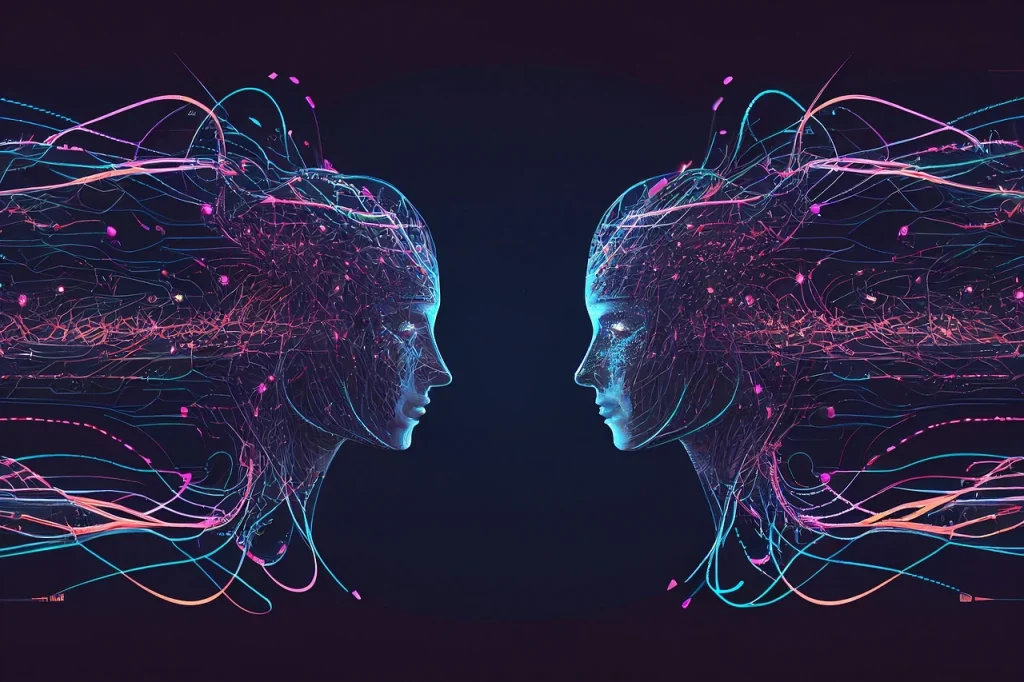By Jesse Osinga, student number 642011

Over the past years, several ingenious AI software products have been launched, capable of performing a wide range of tasks, such as AI text to code Chatbots, AI question to answer Chatbots, or generating artistic images (Singh et al., 2021). Within this emergence of these advanced systems, DALL-E has had a significant impact on me. DALL-E is a ground-breaking platform developed by OpenAI (2023) that can generate images based on natural language descriptions, representing a form of multimodal AI creativity (Singh et al., 2021). In this blog post, I share my experiences and insights gained during my initial interactions with DALL-E, and connect these experiences with existing knowledge and scientific insights.
My first impressions of DALL-E
DALL-E has the ability to combine concepts, properties, and various styles based on the given text prompt (Gozalo-Brizuela & Garrido-Merchán, 2023). The program is highly impressive to witness, and my experiences closely align with the vision of Marcus et al. (2022), who state that DALL-E exhibits impressive visual quality and can apply diverse artistic styles to the specified subject. Specifically, it can handle stylistic instructions and image angle specifications well. Furthermore, it has the ability to apply common-sense reasoning and interpret specific language constructions accurately (Marcus et al., 2022). As a result, this tool has significant implications for various industries (Gozalo-Brizuela & Garrido-Merchán, 2023), as it can automate tasks that previously demanded manual creativity and graphic design, impacting marketing, content creation, creative professions, and various other graphic design fields. Just as my initial interactions with ChatGPT surprised me, the creative potential of DALL-E is equally intriguing. A noteworthy feature of DALL-E is its versatility. It can generate images covering a wide range of subjects and styles, from fairy-tale to futuristic. DALL-E invites users to explore the boundaries of visual storytelling, providing a foundation for boundless creative expression.
Challenges for DALL-E
DALL-E exhibits impressive performance but still has limitations, which I also encountered during its use. Marcus et al. (2022) examined the program and analysed DALL-E with complex prompts. For at least one of the ten generated images, expectations were met (Marcus et al., 2022). Additionally, the system struggles with language constructions like negations and anaphoric references (Marcus et al., 2022). Lastly, assessing the generalization of DALL-E is challenging due to the limited availability of training data. These limitations emphasize the challenges in the development of AI-driven image generation systems.
Conclusion: Navigating the AI Artistic Horizon
My expedition with DALL-E has shown the immense potential of AI tools in graphic design. While the system does not always provide the expected prompts (especially with complex prompts), it remains an excellent means for experimenting with creativity.
Share Your Insights
What are your thoughts and experiences with the software product DALL-E? How has it assisted you in your work? And how do you envision the development of this program in the coming decade? Please share your insights and experiences in the comments.
References
Gozalo-Brizuela, R., & Garrido-Merchán, E. C. (2023). ChatGPT is not all you need. a state
of the art review of large generative AI models. arXiv (Cornell University). https://doi.org/10.48550/arxiv.2301.04655
Marcus, G., Davis, E., & Aaronson, S. (2022). A very preliminary analysis of DALL-E 2
arXiv (Cornell University). https://doi.org/10.48550/arxiv.2204.13807
OpenAI. (2023). DALL·E now available in beta.
Singh, G., Deng, F., & Ahn, S. (2021). Illiterate DALL-E learns to compose. arXiv (Cornell
University). https://doi.org/10.48550/arxiv.2110.11405

